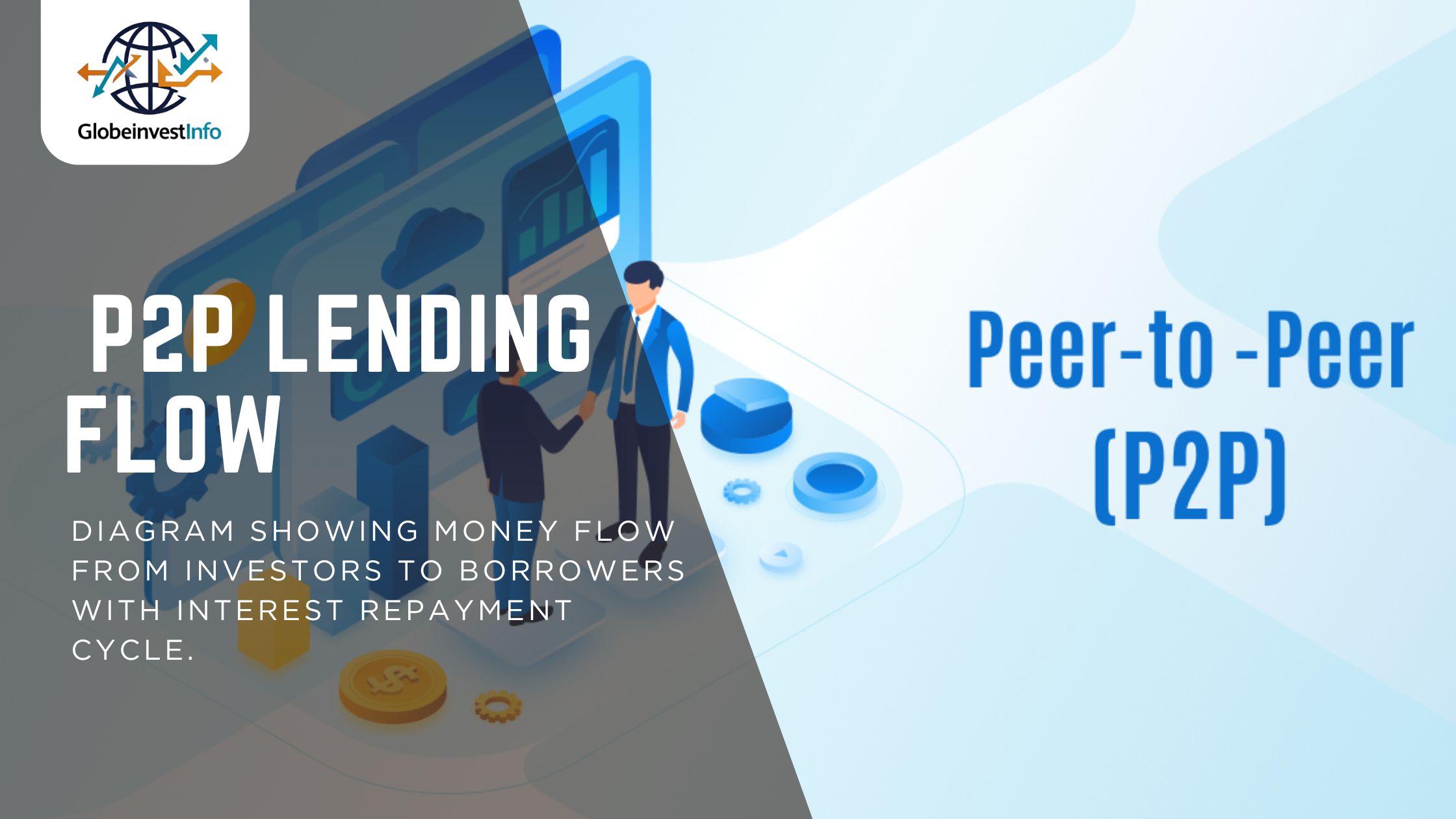Introduction
Many Americans want to grow their money but feel limited by low interest savings accounts and volatile stock markets.
Ignoring new income strategies can mean missed opportunities for financial freedom. Without diversifying, your money may lose value to inflation.
Peer-to-peer (P2P) lending is a practical way to earn passive income in the USA. In this guide, you’ll learn what it is, how it works, its pros and cons, and the steps to start safely.
Quick Read
- P2P lending allows you to earn interest by funding loans online.
- U.S. P2P market hit $33B in 2024 and is projected to grow rapidly.
- Typical returns range from 6%–12%, often higher than savings accounts.
- Main risks include borrower defaults and platform reliability.
- Interest earned is taxed as passive income in the U.S.
What is Passive Income in Peer-to-Peer Lending?
“Passive income” means money earned with minimal daily effort. With peer-to-peer lending, investors act as micro-lenders, providing funds directly to borrowers via online platforms like Prosper or LendingClub.
Instead of a bank taking the middle role, P2P platforms connect lenders and borrowers. You earn interest while borrowers get access to loans, often at more flexible terms.
This makes P2P lending an attractive option for people exploring ways to diversify their passive income streams.
Key Steps for Peer-to-Peer Lending Success
Step 1: Choose a Reputable Platform
Not all platforms are equal. Some specialize in personal loans, while others offer business or real estate lending.
What to look for:
- Regulatory compliance in the U.S.
- Transparent borrower risk ratings
- Historical return data
- Strong security measures
Examples include Prosper and LendingClub for individuals, and Groundfloor for real estate-focused P2P investing.
Step 2: Diversify Your Lending Portfolio
Never put all your funds into one loan. By spreading smaller amounts across many borrowers, you reduce the risk of losing money if a borrower defaults.
Some platforms let you invest as little as $25 per loan, making it easy to diversify across dozens or even hundreds of borrowers.
Step 3: Monitor Returns and Adjust
Your portfolio isn’t completely hands-off. Track your results and adjust based on performance. For example, if defaults increase, you may choose to focus on borrowers with higher credit ratings or shorter loan terms.
Smart Strategies for Long-Term Success
Diversifying Income Streams
While P2P lending can be profitable, it shouldn’t be your only income source. Pair it with other options like dividend stocks, ETFs, or real estate crowdfunding to build a stronger foundation for financial growth.
Managing Risk
Borrower defaults and platform risks are the two biggest challenges. To minimize losses:
- Spread investments widely across borrowers.
- Research the platform’s history and default rates.
- Reinvest earnings to compound growth instead of withdrawing too early.
Tax Considerations
In the U.S., interest from peer-to-peer lending is treated as taxable passive income. Platforms typically issue Form 1099, which you must report on your tax return. Unlike some investments, there are usually no tax shelters available, so plan ahead.
Pros & Cons of P2P Lending
| Pros | Cons |
|---|---|
| Higher potential returns (6%–12%) than savings accounts | Borrower default risk can reduce returns |
| Diversifies income streams beyond stocks and bonds | Platforms may face financial or legal troubles |
| Accessible with low minimum investments (as little as $25) | Liquidity is limited—hard to withdraw early |
| Online convenience and automation options | Interest is fully taxable as passive income |
FAQs
Q1: What returns can I expect from P2P lending?
A1: Returns vary by borrower credit rating and platform. On average, many U.S. platforms offer annualized returns between 6% and 12%.
Q2: Is peer-to-peer lending safe?
A2: No investment is risk-free. While platforms offer risk ratings, there is always a chance of borrower default or platform insolvency. Diversifying across multiple loans reduces exposure.
Q3: How big is the U.S. P2P lending market?
A3: In 2024, the market was valued at about $33.05 billion and is forecasted to grow to $342 billion by 2034.
Q4: How is P2P lending taxed in the USA?
A4: All interest earned is reported as passive income and taxed as ordinary income. Be prepared to report it on your annual return.
Conclusion
Peer-to-peer lending is an innovative way to earn steady passive income in the USA. With returns higher than most savings accounts, it’s attractive for investors who understand the risks and apply smart diversification strategies.
The key is balance: use P2P lending as one piece of a broader financial plan, not your only strategy.
For more insights into money-making ideas, visit our Passive Income blogs. Start small, stay consistent, and let your money work for you.
Kelsey Johnson is a seasoned business writer specializing in strategy, marketing, and entrepreneurship. Her concise, insightful blogs help professionals drive growth and make smarter business decisions.

